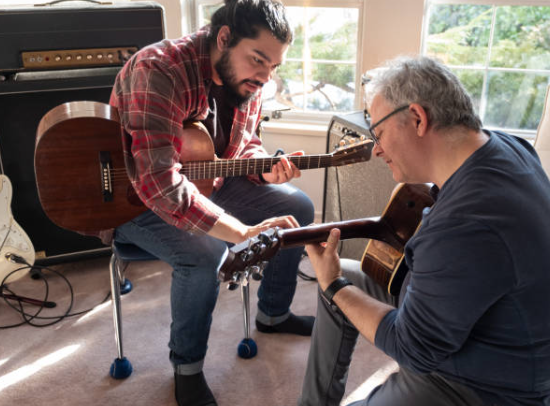Protected: Real Brave Queens Pricing
There is no excerpt because this is a protected post.
There is no excerpt because this is a protected post.

If you’ve ever looked at a chord chart and wondered, “Wait, what’s that chord doing here?”, you’re probably dealing with a non-diatonic chord. To avoid confusion, understanding the difference between diatonic chords and non-diatonic chords is a big step toward mastering music theory. Let’s break it down in this blog. What Does “Diatonic” Mean? Diatonic…

If you’ve ever listened to a song that surprised you with a sudden emotional shift, a haunting chord in a bright tune, or a hopeful moment in a somber ballad, there’s a good chance modal mixture played a role. Also known as mode mixture or modal interchange, this technique involves borrowing chords from a parallel…

If music is a language, then cadences are its punctuation. Just like a sentence can end with a period, a question mark, or an exclamation point, music uses cadences to signal pauses, endings, or unexpected turns. Think of them as musical commas, periods, or even dramatic plot twists. Whether you’re writing songs, learning to play…

If you’ve ever wondered why some solos sound so perfect, so locked-in with the music, the answer often comes down to one simple concept: chord tones. Whether you’re playing jazz, rock, blues, or even pop, mastering a chord tone is one of the true “secrets” to creating solos that connect deeply with the song. Today,…

Why Go Beyond Major and Minor? When most guitarists begin learning chords, they start with the usual suspects: major and minor shapes. While these are essential, they don’t cover the full range of harmonic expression available on the guitar. Enter suspended chords and add chords — two beautiful, often misunderstood chord types that offer new…

Why Should You Care About Whole and Half Steps? If you’ve been playing guitar for a little while, you’ve probably heard terms like whole step and half step thrown around in lessons or tutorials. But what do they really mean? And why should you care? Here’s the truth: Whole and half steps are the building…

When it comes to music, rhythm is a key element that dictates the flow and feel of a piece. Whether you’re a budding musician or an experienced player looking to refine your skills, grasping the concept of rhythm is crucial. In this blog, we’ll explore the basics of rhythm, meter, and time signatures, and provide…

Are guitar stores DEAD?? In today’s episode we’re discussing the major news that Sam Ash is shutting down all its stores. This iconic, family-owned business has been around for over a century, but it couldn’t withstand the rising tide of online sales. In the digital era, e-commerce giants offer vast selections and competitive prices, challenges…